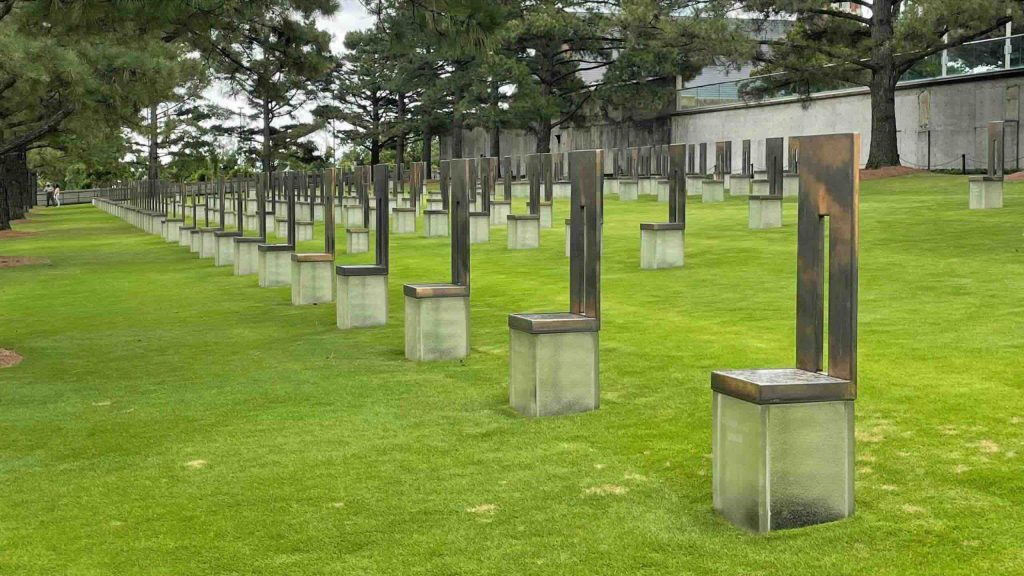In the heart of Oklahoma City, a day that started like any other was shattered by an act of domestic terrorism that would forever change the fabric of American history. On April 19, 1995, the Alfred P. Murrah Federal Building was targeted in a bombing that claimed 168 lives, injured over 680 individuals, and etched a date of infamy into the nation's collective memory. Orchestrated by Timothy McVeigh and Terry Nichols, this catastrophic event not only represented the deadliest act of domestic terrorism in the U.S. until the September 11 attacks but also sparked a nationwide introspection on security, community resilience, and the specter of homegrown extremism. As the dust settled, stories of heroism, unity, and an indomitable spirit emerged, weaving a complex tapestry of grief and determination. The Oklahoma City Bombing stands as a stark reminder of the depths of human malice and the heights of collective strength in overcoming tragedy. How did this single act of violence influence national security policies and reshape the community it sought to destroy?
Key Takeaway
Timeline
Day Activities
-
Morning Reflections: As dawn breaks, attendees gather for a solemn moment of silence at the exact time the bomb detonated, honoring those lost and affected. This powerful act of remembrance kicks off the day's activities, setting a tone of reflection and unity.
-
Survivor Tree Bell Ringing: Midday brings the poignant ringing of the Survivor Tree bell, a symbol of resilience and hope amidst devastation. Each toll resonates with the promise of never forgetting the past while looking forward to healing and strength in the community.
-
Evening Vigil: As twilight descends, candles flicker in the hands of those gathered for the evening vigil. Reading aloud the names of the 168 victims, this ceremony bridges generations, reminding all of the enduring spirit of Oklahoma City in the face of adversity.
Interesting Facts
1. Deadliest Domestic Terrorism Act
Before 9/11, the Oklahoma City Bombing was the deadliest act of domestic terrorism in U.S. history.
2. Timothy McVeigh and Terry Nichols
Timothy McVeigh and Terry Nichols carried out the bombing, killing 168 people.
3. National Commemoration Day
April 19 is recognized as National Oklahoma City Bombing Commemoration Day.
4. Impact on Security Measures
The bombing led to increased security measures and changes in federal response to threats.
5. Unity and Resilience
Oklahoma City showed resilience, coming together to support victims and rebuild.
Why We Love This Day
-
Honoring the Victims and Heroes
On National Oklahoma City Bombing Commemoration Day, we pay tribute to the 168 lives lost and the heroes who emerged in the tragedy's aftermath. This day serves as a poignant reminder of the cost of hatred and the strength found in unity. Communities across the nation come together, reflecting on the sacrifices made and the bravery shown by first responders and ordinary citizens alike. It's a day that underscores the importance of standing together against violence and terrorism.
-
Reflecting on Our Nation's Resilience
April 19 marks not just a day of remembrance but also a celebration of national resilience. In the face of such a devastating event, the country rallied, showing the world an incredible capacity for recovery and solidarity. This day encourages everyone to look back on how far we've come since that fateful morning in 1995, recognizing the strides made in security, community support, and national healing. It's about acknowledging our collective strength and the enduring spirit of the American people.
-
Educational Importance
National Oklahoma City Bombing Commemoration Day plays a crucial role in education, ensuring future generations understand the impact of domestic terrorism and the value of peace and tolerance. Schools and communities engage in discussions and activities that highlight the importance of unity and the dangers of extremism. By learning about the past, young people are equipped to foster a more compassionate and understanding world, making this day vital for ongoing conversations about peace, justice, and community resilience.
Past & Future Dates
| Month | Day | Year |
|---|---|---|
| APRIL | 19 | 2022 |
| APRIL | 19 | 2023 |
| APRIL | 19 | 2024 |
| APRIL | 19 | 2025 |
| APRIL | 19 | 2026 |
| APRIL | 19 | 2027 |
| APRIL | 19 | 2028 |
FAQ
Who was found guilty of the Oklahoma City bombing?
Terry Nichols and Timothy McVeigh were found guilty of the Oklahoma City bombing at the Alfred P. Murrah Federal Building on April 19, 1995.
How many people died in the Oklahoma City bombing in 1995?
168 people, including 19 children, lost their lives as a result of the Oklahoma City bombing.
Did anyone survive the Oklahoma City bombing?
Yes, more than 600 people survived the blast, enduring years of healing and facing the impact of that day on their lives.
How long does it take to go through the Oklahoma City bombing memorial?
Visitors typically spend about an hour and a half at the memorial. While the museum has specific holiday closures, the outdoor symbolic memorial is accessible every day, all year round.
